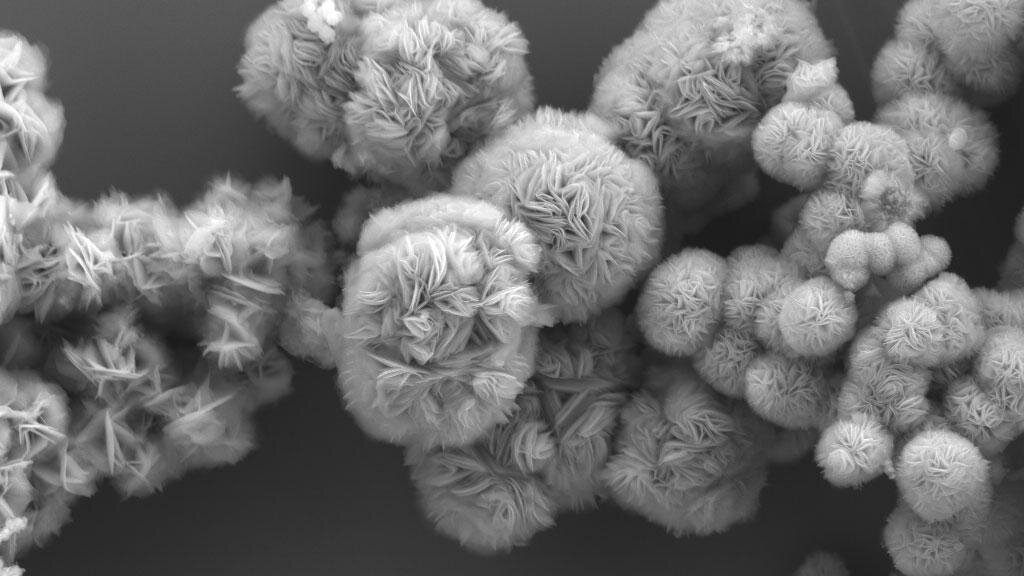
Scientists discover easy way to make atomically-thin metal layers for new technology

The secret to a ideal croissant is the layers—as numerous as feasible, every single one interspersed with butter. In the same way, a new content with assure for new purposes is made of quite a few incredibly slender levels of metallic, among which researchers can slip distinctive ions for several needs. This will make them probably extremely practical for future substantial-tech electronics or energy storage.
Until not too long ago, these materials—known as MXenes, pronounced “max-eens”—were as labor-intensive as very good croissants produced in a French bakery.
But a new breakthrough by experts with the University of Chicago exhibits how to make these MXenes significantly far more speedily and simply, with fewer harmful byproducts.
Scientists hope the discovery, printed March 23 in Science, will spur new innovation and pave the way in direction of using MXenes in day to day electronics and products.
Atom financial system
When they were discovered in 2011, MXenes made a ton of scientists extremely fired up. Generally, when you shave a steel like gold or titanium to develop atomic-skinny sheets, it stops behaving like a metallic. But unusually strong chemical bonds in MXenes allow them to retain the exclusive qualities of steel, like conducting electricity strongly.
They’re also quickly customizable: “You can place ions concerning the layers to use them to retailer vitality, for example,” reported chemistry graduate student Di Wang, co-first author of the paper together with postdoctoral scholar Chenkun Zhou.
All of these rewards could make MXenes extremely handy for creating new devices—for instance, to shop electrical energy or to block electromagnetic wave interference.
Nevertheless, the only way we knew to make MXenes involved quite a few intense chemical engineering steps, which includes heating the combination at 3,000°F adopted by a bathtub in hydrofluoric acid.
“This is fine if you might be building a few grams for experiments in the laboratory, but if you needed to make large amounts to use in business merchandise, it would grow to be a big corrosive squander disposal challenge,” described Dmitri Talapin, the Ernest DeWitt Burton Distinguished Assistance Professor of Chemistry at the University of Chicago, joint appointee at Argonne National Laboratory and the corresponding author on the paper.
To design a a lot more successful and fewer toxic system, the group applied the principles of chemistry—in individual “atom overall economy,” which seeks to lessen the range of squandered atoms during a reaction.
The UChicago group uncovered new chemical reactions that enable researchers to make MXenes from uncomplicated and inexpensive precursors, with out the use of hydrofluoric acid. It consists of just 1 action: mixing a number of substances with whichever metal you would like to make layers of, then heating the mixture at 1,700°F. “Then you open up it up and there they are,” explained Wang.
The simpler, less toxic technique opens up new avenues for scientists to make and discover new varieties of MXenes for diverse applications—such as unique metal alloys or unique ion flavorings. The workforce examined the strategy with titanium and zirconium metals, but they consider the approach can also be made use of for numerous other unique combos.
“These new MXenes are also visually gorgeous,” Wang extra. “They stand up like flowers—which may well even make them superior for reactions, for the reason that the edges are exposed and obtainable for ions and molecules to move in in between the metallic layers.”
Graduate college student Wooje Cho was also a co-creator on the paper. The exploration was built feasible by enable from UChicago colleagues across departments, together with theoretical chemist Suri Vaikuntanathan, X-ray exploration facility director Alexander Filatov, and electrochemists Chong Liu and Mingzhan Wang of the Pritzker University of Molecular Engineering. Electron microscopy was carried out by Robert Klie and Francisco Lagunas with the University of Illinois Chicago.
More data:
Di Wang et al, Immediate synthesis and chemical vapor deposition of 2D carbide and nitride MXenes, Science (2023). DOI: 10.1126/science.include9204
Daniel D. Robertson et al, A direct and clean up route to MXenes, Science (2023). DOI: 10.1126/science.ade9914
Citation:
Scientists find out quick way to make atomically-thin metallic layers for new engineering (2023, March 24)
retrieved 25 March 2023
from https://phys.org/news/2023-03-experts-straightforward-atomically-skinny-metal-layers.html
This document is matter to copyright. Aside from any reasonable working for the purpose of private review or exploration, no
component may well be reproduced without the written permission. The content material is supplied for information reasons only.
